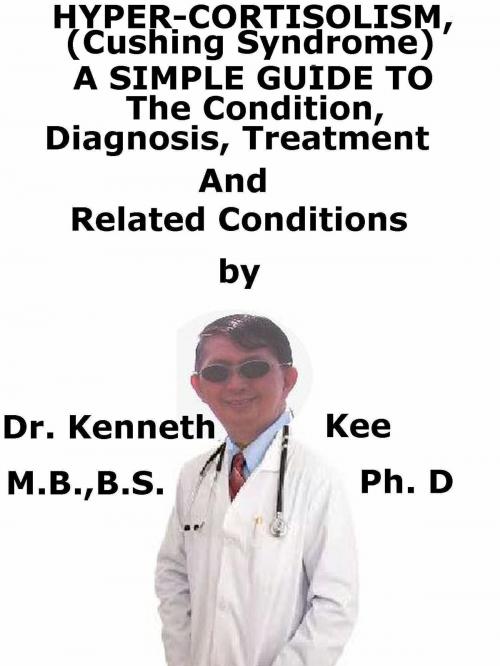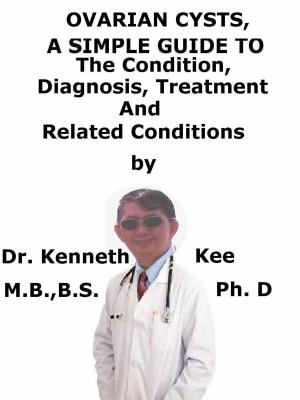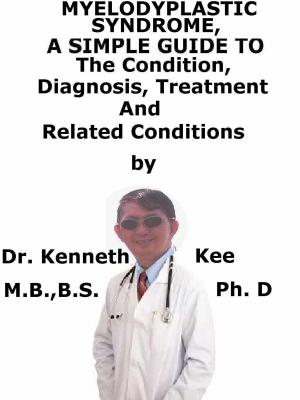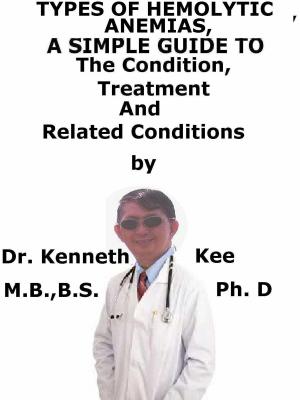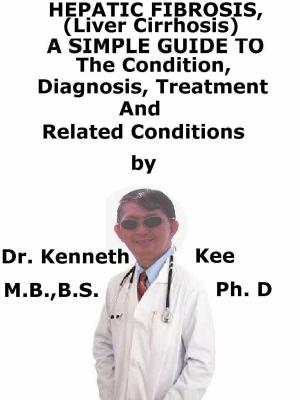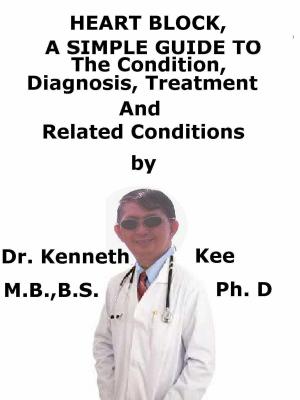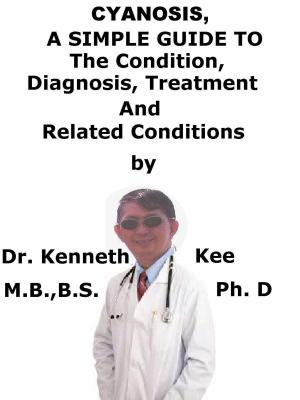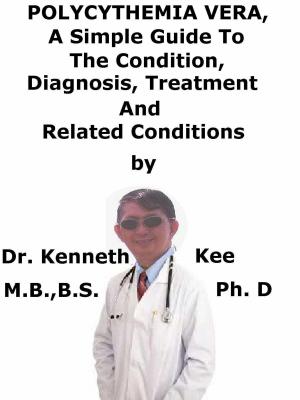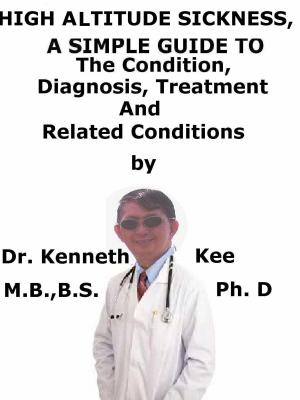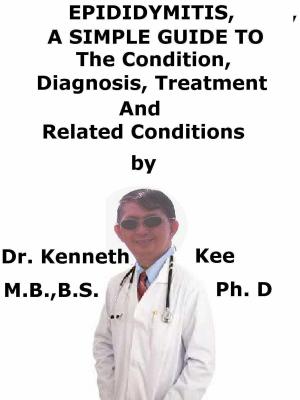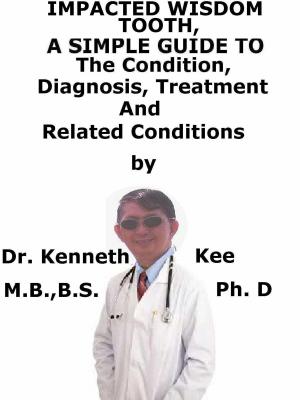Hyper-cortisolism (Cushing Syndrome), A Simple Guide To The Condition, Diagnosis, Treatment And Related Conditions
Nonfiction, Health & Well Being, Medical, Specialties, Internal Medicine, Endocrinology & Metabolism| Author: | Kenneth Kee | ISBN: | 9781370878697 |
| Publisher: | Kenneth Kee | Publication: | November 4, 2016 |
| Imprint: | Smashwords Edition | Language: | English |
| Author: | Kenneth Kee |
| ISBN: | 9781370878697 |
| Publisher: | Kenneth Kee |
| Publication: | November 4, 2016 |
| Imprint: | Smashwords Edition |
| Language: | English |
The exposure of the body to excess amounts of glucocorticoids steroids is the cause of the medical disorder Hyper-cortosolism (Cushing Syndrome).
The Hyper-cortosolism will happen when the body is exposed to high levels of the hormone cortisol and therefore the word Hyper-cortosolism is more appropriate than Cushing Syndrome.
It may also happen if the patient takes too much cortisol or other steroid hormones.
People of all ages are affected but more are seen in females from 30 to 50 years of age.
The most common cause of Hyper-cortosolism is taking excess glucocorticosteroid medicine.
This form of Hyper-cortosolism is called exogenous Cushing syndrome
Other people form Hyper-cortisolism because their body secretes too much cortisol.
The cortisol is made in the adrenal glands.
The causes of too much cortisol are:
1. Cushing disease, which happens when the pituitary gland produces too much of the hormone ACTH by itself.
ACTH then activates the adrenal glands to form too much cortisol.
A pituitary gland tumor can produce this disorder.
2. Tumor of the adrenal gland
a. Tumor somewhere in the body that forms corticotrophin-releasing hormone (CRH)
b. Tumors somewhere in the body that form ACTH (ectopic Cushing syndrome)
Exposure to excess glucocorticoids leads to multiple medical problems, such as:
1. Hypertension,
2. Obesity,
3. Osteoporosis,
4. Fractures,
5. Impaired immune function,
6. Impaired wound healing,
7. Glucose intolerance,
8. Psychosis
Most people with Hyper-cortisolism have:
1. Round, red, full face (moon face)
2. Slow growth rate (in children)
3. Weight gain with fat accumulation on the trunk
Diagnosis of Hyper-cortisolism:
1. The typical moon face and buffalo hump can suggest the diagnosis of Hyper-cortisolism
2. Blood sugar and white blood cell counts may be high.
3. Potassium level may be low.
Laboratory tests that may be done to diagnose Hyper-cortisolism and identify the cause are:
1. Serum cortisol levels
2. Salivary cortisol levels
3. Dexamethasone suppression test
4. 24-hour urine for cortisol and creatinine
5. ACTH level
The treatment for exogenous Cushing syndrome is slow withdrawal of glucocorticoid.
Medicines used in the treatment of Cushing syndrome are:
1. Somatostatin analogs (e.g., pasireotide)
2. Adrenal steroid inhibitors (e.g., metyrapone, ketoconazole, aminoglutethimide, mifepristone)
Surgical option
1. Remove a causative tumor if possible.
The chosen treatment for endogenous Cushing syndrome is surgical excision of the causative tumor.
This primary treatment for Cushing disease is trans-sphenoidal surgery and the primary treatment for adrenal tumors is adrenalectomy.
TABLE OF CONTENT
Introduction
Chapter 1 Hyper-cortisolism
Chapter 2 Causes
Chapter 3 Symptoms
Chapter 4 Diagnosis
Chapter 5 Treatment
Chapter 6 Prognosis
Chapter 7 Addison Disease
Chapter 8 Adrenal Fatigue
Epilogue
The exposure of the body to excess amounts of glucocorticoids steroids is the cause of the medical disorder Hyper-cortosolism (Cushing Syndrome).
The Hyper-cortosolism will happen when the body is exposed to high levels of the hormone cortisol and therefore the word Hyper-cortosolism is more appropriate than Cushing Syndrome.
It may also happen if the patient takes too much cortisol or other steroid hormones.
People of all ages are affected but more are seen in females from 30 to 50 years of age.
The most common cause of Hyper-cortosolism is taking excess glucocorticosteroid medicine.
This form of Hyper-cortosolism is called exogenous Cushing syndrome
Other people form Hyper-cortisolism because their body secretes too much cortisol.
The cortisol is made in the adrenal glands.
The causes of too much cortisol are:
1. Cushing disease, which happens when the pituitary gland produces too much of the hormone ACTH by itself.
ACTH then activates the adrenal glands to form too much cortisol.
A pituitary gland tumor can produce this disorder.
2. Tumor of the adrenal gland
a. Tumor somewhere in the body that forms corticotrophin-releasing hormone (CRH)
b. Tumors somewhere in the body that form ACTH (ectopic Cushing syndrome)
Exposure to excess glucocorticoids leads to multiple medical problems, such as:
1. Hypertension,
2. Obesity,
3. Osteoporosis,
4. Fractures,
5. Impaired immune function,
6. Impaired wound healing,
7. Glucose intolerance,
8. Psychosis
Most people with Hyper-cortisolism have:
1. Round, red, full face (moon face)
2. Slow growth rate (in children)
3. Weight gain with fat accumulation on the trunk
Diagnosis of Hyper-cortisolism:
1. The typical moon face and buffalo hump can suggest the diagnosis of Hyper-cortisolism
2. Blood sugar and white blood cell counts may be high.
3. Potassium level may be low.
Laboratory tests that may be done to diagnose Hyper-cortisolism and identify the cause are:
1. Serum cortisol levels
2. Salivary cortisol levels
3. Dexamethasone suppression test
4. 24-hour urine for cortisol and creatinine
5. ACTH level
The treatment for exogenous Cushing syndrome is slow withdrawal of glucocorticoid.
Medicines used in the treatment of Cushing syndrome are:
1. Somatostatin analogs (e.g., pasireotide)
2. Adrenal steroid inhibitors (e.g., metyrapone, ketoconazole, aminoglutethimide, mifepristone)
Surgical option
1. Remove a causative tumor if possible.
The chosen treatment for endogenous Cushing syndrome is surgical excision of the causative tumor.
This primary treatment for Cushing disease is trans-sphenoidal surgery and the primary treatment for adrenal tumors is adrenalectomy.
TABLE OF CONTENT
Introduction
Chapter 1 Hyper-cortisolism
Chapter 2 Causes
Chapter 3 Symptoms
Chapter 4 Diagnosis
Chapter 5 Treatment
Chapter 6 Prognosis
Chapter 7 Addison Disease
Chapter 8 Adrenal Fatigue
Epilogue
